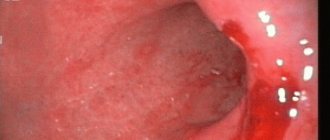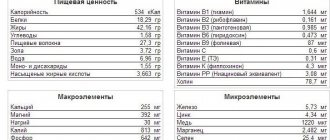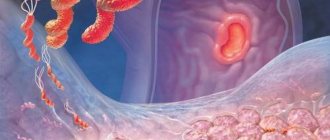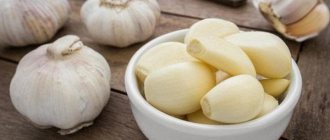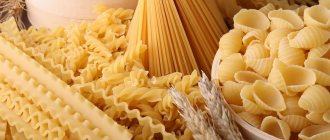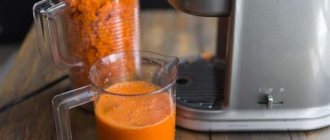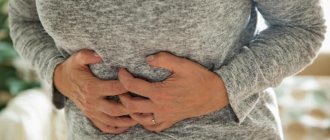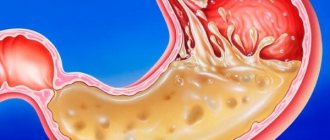Many diseases of the digestive system of the body develop not only due to poor nutrition, but also for a number of other reasons. Pathological processes that occur in the gastric mucosa provoke changes in it, which leads to various inflammatory phenomena, so it is necessary to restore the gastric mucosa.
What happens during atrophy
The cells of the inner layer of the stomach in a healthy person are quickly renewed. For example, the surface epithelium completely changes within 1 to 3 days. With atrophy, it is the process of cellular renewal that is disrupted; structural changes occur in the structure of the mucosa.
Metaplasia of the digestive glands gradually develops - they are replaced by intestinal epithelium.
Modified glands are not able to produce the necessary secretion - the secretion of hydrochloric acid and pepsin is reduced, motility and absorption of nutritional components slow down.
Atrophy is a formidable harbinger of gastric cancer. Therefore, restoring the full functioning of the stomach during atrophic gastritis is of great importance for overall health.
Before prescribing drugs that restore the gastric mucosa, the patient’s lifestyle should be carefully analyzed and, if necessary, adjusted. The scenario for measures to normalize the regime is as follows:
- Healthy eating.
- Rejection of bad habits.
- Correction of systematic medication intake for other non-gastric pathologies.
- The use of drugs that promote cell regeneration and restoration.
- Regular medical supervision.
Prevention of atrophic gastritis
An abundance of fatty, unhealthy foods with dyes, emulsifiers and flavor enhancers, soda, alcohol, lack of beneficial microelements in food - all this leads to disturbances in the functioning of the body. The main task in order for the stomach to remain functional and healthy is to eat more fresh fruits, herbs, vegetables, drink freshly squeezed juices, eat cereals and nuts, and exercise. To prevent atrophic gastritis, it is important to monitor your diet every day.
With chronic gastritis, it is necessary to be constantly monitored and examined at least once a year in order to prevent any relapses when they first begin to appear. This should not mean that you will have to control yourself for the rest of your life - you just need to make your lifestyle and diet healthier and more correct. To get involved in this process easily and effortlessly, you can read suitable literature on the topic of a healthy lifestyle, look for positive aspects in it and believe that you will defeat atrophic gastritis.
Is it possible to cure atrophic gastritis? One of the forms of chronic gastritis is atrophic, which is dangerous because it leads to a precancerous condition of the stomach. This disease affects middle-aged and elderly men more often. Initially, signs of the disease are not detected. There is no pronounced clinical picture, so treatment may begin later than necessary.
From chaotic to healthy – selecting products
There are no universal recommendations on how to quickly restore the gastric mucosa. But if you have any problems with digestion, give up “unhealthy” foods - fatty and spicy foods, spices, smoked foods, strong coffee. Vinegar, carbonated drinks, too hard foods, hot sauces have an irritating effect, and microcracks appear on the inner surface of the stomach.
These microscopic lesions disrupt the barrier function and become an excellent entry point for any bacteria. The main aggressor is Helicobacter pylori, which thrives in an acidic gastric environment and begins to actively multiply and destroy cells.
Reference! Helicobacter pylori is a conditionally pathogenic bacterium. It is not dangerous for a healthy person, but when immunity is reduced and microtraumas of the inner layer of the stomach are present, it causes gastritis and peptic ulcers.
To restore the gastric mucosa, follow the principles of nutrition for atrophic gastritis. Not only food products matter, but also the methods of preparing them. The best options are boiling, stewing, baking, and steaming. Frying is excluded. If the mucous membrane is damaged, the patient's diet requires zinc, vitamins B6, E and C. If there are not enough of them in the diet, the doctor will prescribe synthetic analogues.
How it works?
How do these drugs work in our stomachs? Everything is very simple, the negative impact is realized due to the imbalance of defensive and aggressive forces. We have a number of defense mechanisms in our stomach that allow us to withstand the onslaught of aggressors. Among the latest:
- An acid whose pH balance is close to that of battery acid
- Bile and pancreatic juice, which can be thrown into the stomach.
- A number of medications.
- Alcohol and nicotine.
- Irritating food components (spices, spicy foods, etc.)
- Helicobacter pylori infection and so on.
The stomach is protected due to a thick layer of mucus and bicarbonates that neutralize acid, adequate blood supply, and the ability to regenerate very quickly. When we use NSAID drugs, the balance of forces changes towards aggressive mechanisms and damage occurs to the mucous and submucosal layer of the stomach and intestines.
Alcohol, nicotine and the stomach – is there a connection?
There is a misconception that alcohol is only harmful to the brain, and nicotine is only harmful to the lungs.
But bad habits have a detrimental effect on all systems and organs without exception. When alcohol enters the stomach, it greatly irritates the mucous membrane, and also increases the secretion of hydrochloric acid and slows down the digestive processes.
In addition, nicotine strongly constricts blood vessels - the blood supply to the digestive glands is disrupted, and motility is impaired. With existing cell damage, the painful processes are aggravated, and the deeper layers of the membrane are damaged.
Therefore, quitting smoking and alcoholic beverages is a prerequisite for restoring atrophied cellular structures.
How to choose a medicine
In fact, the most important point is which medications we take. In the figure you can see the scale of aggressiveness of various drugs from the NSAID group in relation to the stomach.
The most aggressive drugs are Aspirin, Ketorolac, Piroxicam, Indomethacin. If possible, it is recommended to use selective drugs that have minimal gastrointestinal risks. Their use is always more desirable, these include Celecoxib and Rofecoxib. But despite their relative safety, they should be prescribed strictly according to indications by the attending doctor, do not forget about this.
Advice for drug lovers
Many medications are irritating to the stomach. This primarily concerns the non-steroidal anti-inflammatory group. Beloved by many Ketorol. Diclofenac and Ibuprofen are great for relieving pain and fever, but are extremely harmful to the digestive system.
Chronic gastritis and ulcers are a direct contraindication to the use of these medications, but not all patients know about this. The ability to purchase non-steroids without a prescription makes them a popular remedy in every home medicine cabinet.
If a patient with gastritis takes non-steroids frequently, the disease will develop into an ulcer, and with a peptic ulcer, uncontrolled use of NSAIDs can provoke bleeding.
Anticoagulants, iron supplements, and some hormonal medications have a bad effect on the mucous membrane. If you want to restore the gastric mucosa, medications should be taken only in accordance with the doctor’s recommendations, and nothing else.
"Magic" pills
There is a group of drugs collectively called non-steroidal anti-inflammatory drugs (NSAIDs), which we all have taken at least once in our lives, and many regularly. These are drugs that have analgesic, anti-inflammatory and/or antipyretic effects. Examples include Aspirin, Nurofen, Nice, Ketanov, Ketoprofen and others. Considering the “magical effects” of their action - relieving inflammation, pain and fever - they are prescribed by almost everyone, everyone, always. Prescribed by traumatologists, rheumatologists, therapists, ENT specialists, dentists. Plus, they can be purchased completely freely at any pharmacy. But, along with the “magical properties”, these drugs have a number of side effects that can be divided into 2 groups: cardio risks and gastro risks. Actually, gastrorisks will be discussed in this article.
What will the gastroenterologist prescribe?
As part of a comprehensive treatment, the gastroenterologist recommends to the patient drugs that restore the gastric mucosa. These include:
- Bismuth preparations - Novobismol, De-nol, Vikair. This group of drugs eliminates heartburn, has antibacterial properties, and enhances the secretion of protective mucus in the stomach.
- Antacids - Relzer, Gastal, Almagel. The action of these drugs is based on a neutralization reaction, that is, they neutralize excess acid in the stomach, thereby restoring the mucous membrane.
- Enzyme preparations - Mezim, Creon. Panzinorm. These drugs restore the gastric mucosa by accelerating digestive processes. That is, the enzymes actually work for the damaged mucosa, relieving it of stress. Enzymes are prescribed not only for histologically confirmed membrane defects, but also for erythematous gastropathy and hyperemia. Reducing the load on the stomach allows you to quickly eliminate the symptoms of gastropathy of various forms.
- If damage to the mucous membrane is accompanied by pain, myotropic antispasmodics - Drotaverine, No-shpu - are prescribed to relieve spasms. The drugs relieve spasms and eliminate pain.
Treatment priorities for restoration of gastric cells are well described in a scientific review by S. S. Vyalov, Russian gastroenterologist, candidate of medical sciences. In his work, he examines in detail all groups of drugs for restoring the internal lining of the stomach, the principle of their action and treatment regimens.
Folk remedies
Restoration of the stomach lining using folk remedies is carried out using jelly. This drink gently envelops the membrane and heals microcracks. Not allowing bacterial agents to penetrate deeper. Regular consumption of jelly for gastritis allows you to quickly relieve inflammation and protect the injured surface.
Interesting! To reduce the toxic and irritating effects of some hormonal drugs, you can crush them, take them in powder form and wash them down with jelly. The aggressive effect on the stomach is neutralized.
Folk remedies
Unconventional methods will help you improve your well-being. Folk recipes are based on the beneficial properties of plants, fruits and vegetables. Such remedies help reduce stomach acidity, protect it from damage and eliminate pain.
The best folk remedies:
- Apple porridge. This remedy is indicated for patients with low acidity. Every morning you need to start with apple salad. Grate a large green apple, you should get about 50 g. Add lemon juice and eat this delicious medicine for breakfast. You should not drink or eat other foods for 2-3 hours. For inflammatory diseases, the method is contraindicated. Duration - 2-3 weeks.
- Wormwood tincture. Not the most delicious medicine, but it helps eliminate heartburn. Pour 50-100 g of wormwood leaves and flowers with vodka in a volume of 500 ml. Let the product sit for 3 weeks. The strained infusion should be drunk every day, 1 teaspoon, with honey or flaxseeds. The course of treatment is 10 days.
- Infusion of birch buds. To prepare you will need 50 g of dry raw materials and 500 ml of vodka or alcohol. Birch buds are poured with alcohol, covered with a lid and left in a dark place for 2-3 weeks. Afterwards, it is recommended to strain the tincture and add the drops to tea. 1 tablespoon per day is enough. Symptoms will disappear after a month of constant use.
- Flax jelly. To prepare, you will need 2 tablespoons of seeds and a glass of boiling water. You need to pour the flax overnight and leave it to swell until the morning. Before breakfast, drink the resulting decoction completely. The consistency of the drink will resemble jelly. Course duration is from 1 to 3 weeks.
- Potato juice. Pass the vegetable through a juicer. You need to drink the product immediately so that the starch does not settle. This drink has an enveloping property and helps not damage the gastric lining. You need to take the medicine on an empty stomach for 10 days in a row. Afterwards you need to take a 2-week break and repeat the course.
- Carrot juice. This must be a freshly prepared drink. You must drink carrot juice within 10 minutes, otherwise it will lose its restorative properties. The product is tasty and has a rich vitamin composition.
- Raw eggs. A product for those who are not afraid to eat thermally unprocessed protein. In the morning you need to beat 2 raw eggs without yolks and drink. You can drink the remedy with mint or chamomile tea, sweetened with honey. The product is indicated to reduce acidity. The course of treatment is up to 2 weeks.
- Dandelion tea. To prepare the medicine you need the roots. The dried raw materials are cut, poured with boiling water and allowed to brew for an hour. During the day you need to drink 200 ml, dividing them into 3-4 doses. The tea should be taken warm.
- Cabbage juice. The drink is made from fresh white vegetables. In the morning you need to prepare the juice, 5-6 tablespoons are enough. The product must be warmed before use. The folk recipe helps even with erosion.
This is interesting: The main causes of unpleasant urine odor in women and their treatment
Despite the safety of the ingredients, consult your doctor before starting the course.
Mandatory control
An additional condition for successful recovery is regular medical supervision. A patient with any defects in the inner lining of the stomach must definitely visit a gastroenterologist, who will prescribe a number of necessary examinations and adjust medication and diet.
Don't give up on EGD. Today this is the most effective method for diagnosing gastric pathologies. Get tested regularly - often defects in the mucous membrane lead to the development of anemia. Do not neglect visiting the clinic - regular medical monitoring will help you avoid complications of gastritis and prevent peptic ulcers.
Diagnostics
If you have abdominal pain or any disturbances in the functioning of the digestive system, you should consult a gastroenterologist. A general practitioner can also prescribe medications to relieve symptoms. At the appointment, the patient must describe his feelings as accurately as possible, so that the specialist can refer him for further research and prescribe relieving therapy.
Diagnostic methods:
- general tests of urine, blood and feces;
- detailed biochemical blood test;
- detection of blood in stool and microscopy;
- ELISA reaction;
- serological analysis;
- histology of epithelial tissue biopsy;
- urease test;
- bacteriological culture of the stomach lining;
- PCR studies.
In addition to laboratory tests, instrumental methods for identifying mucosal problems are also shown. First of all, this is fibroesophagogastroduodenoscopy - swallowing a probe. This method will help not only confirm gastritis, but also take a piece of the gastric layer for analysis.
Instrumental diagnostics:
- ultrasound examination of the abdominal organs;
- intragastric pH-metry;
- X-ray.
Additionally, it may be necessary to examine not only the stomach, but also the assistant organs. It is recommended to take an x-ray of the duodenum.
Stages of damage
The listed methods will help determine the location of the damage and the degree of disruption of the tissue structure. Diagnostics is valuable for identifying and differentiating various pathological formations in the stomach, stages and forms of the inflammatory process, acidity levels and other disorders.
Stages of gastritis:
- Atrophy in acute form. This is already a chronic lesion, which can be in remission for a long time. The study will reveal swelling of the mucous membrane, infiltration of leukocytes, disruption of epithelial tissue and, in advanced cases, erosion. This form is dangerous to the health and life of the patient; it can be accompanied by high fever and even coma, including heart failure and respiratory arrest.
- Chronic atrophic gastritis. This is a separate disease that is currently considered inactive. The patient practically does not feel symptoms of the disorder, inflammatory processes are stopped. Other organs adjacent to the stomach may also be involved in pathogenesis. In the chronic stage, gastric acidity is reduced. For detection, endoscopy is indicated, laboratory gastropanel and histology are prescribed.
- Focal stage. At this stage, the epithelial tissue is not only damaged, but also changes. Increased acidity is observed, and a large amount of hydrochloric acid is produced. Symptoms are especially aggravated after eating dairy, fatty foods and chicken eggs.
- Moderate stage. This is a partial lesion of the mucous membrane in a mild form. Symptoms may not appear or may worsen after eating provoking foods: after salty, smoked food, or fast food, the stomach in the stomach area begins to ache.
- Superficial atrophy. This is a chronic inflammatory disease. The first stage is manifested only by nausea, heartburn and, less commonly, pain in the epigastric region. The damage is minimal but can grow at an unknown rate if treatment and nutritional therapy are not started.
- Antral atrophic gastritis. The disease is typical of the lower part of the stomach, where the organ is connected to the intestines by the intestine. The patient experiences pain in the solar plexus, morning sickness, and heartburn after eating. Additionally, the diagnosis will reveal reduced acidity and rigidity of the stomach walls. This stage often provokes ulcerative processes and causes the appearance of a tumor.
- Diffuse degree. This is an intermediate stage that cannot be classified as a serious disease. Dystrophy is observed at the micro level, only a small part of the cells is damaged. There is no local focus of inflammation.
These are some possible degrees of impairment. Also, during the diagnosis, the patient may be diagnosed with allergic gastritis without changes in the mucous membrane or other pathologies not related to the functioning of the stomach.
Treatment with diet
A balanced diet helps cure gastritis
A balanced, properly selected diet helps prevent and cure gastritis. Bad habits can irritate the mucous membrane, so the patient is advised to give up alcoholic beverages and smoking.
It is advisable to exclude junk food from the daily menu. Minimize the consumption of vegetables, cabbage and mushroom dishes, as well as greens.
The list of dishes is determined by the doctor. You need to eat often, but in small portions.
Food should not be too cold or hot. The food should be dominated by fish, lean meats and plant foods.
You should also exclude from the menu food items that have been in the refrigerator for a long time. Eating fast food is strictly prohibited.
You can only eat dishes that are prepared 3-4 hours before the meal, and only from high-quality products.
